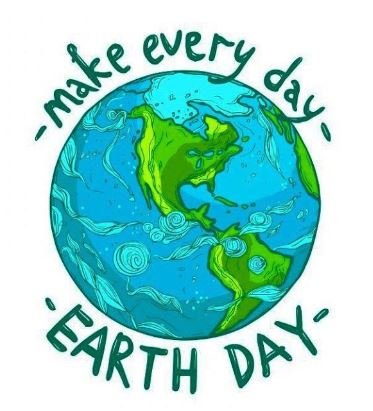Earth Day
For farmers, every day is Earth Day, not just an annual event celebrated on April 22nd to promote environmental awareness and encourage people to take action to protect our planet. What began as a grassroots movement in the United States in the 1970s has become a way of life for many.
The history of Earth Day can be traced back to the 1960s, a time of significant social and political change in the United States. In 1962, Rachel Carson published her groundbreaking book Silent Spring, which documented the destructive effects of pesticides. This book and the growing environmental movement it helped to inspire led to the first Earth Day in 1970 when an estimated 20 million Americans took part in rallies, demonstrations, and other activities to promote environmentalism. This event was the largest public demonstration in American history at that time and helped to catalyze the modern environmental movement.
Since then, Earth Day has continued to grow and evolve, becoming a global event that is celebrated in more than 190 countries around the world. It has been recognized as a day to raise awareness about environmental issues such as climate change, pollution, and deforestation, as well as to promote sustainability and conservation.
We must become vigilant not just on a single day of the year, but every day as each passing year we witness the pressing environmental issues facing our planet such as rising ocean levels, increasing atmospheric events, rising temperatures, and natural events including floods, fires, and droughts which all have a significant impact on our food supply.
There are lots of behind-the-scenes work your farmers do to make a positive effect on the environment. Organic practices, integrative pest management to reduce and eliminate pesticide usage, rotational grazing, creating wildlife habitat, planting to support pollinators, no-till cropping, preventing soil erosion, installing solar for the farm’s energy supply, installing and maintaining riparian buffers, educating themselves about new technologies in sustainable and regenerative agriculture to name a few. Thanks to programs such as Pennsylvania and the Chesapeake Bay Foundation’s 10 Million Tree Challenges farmers and landowners are provided with native tree seedlings. I’m looking at all those holes I need to dig for my trees as good exercise for me as well as great carbon sinks.
But I’m not a farmer, what can I do? Plenty! Get yourself a wheeled market basket or wagon and walk to your local farmers market. If it’s too far to walk, consider biking. I’ve met dozens of folks over the years with stable systems on their bikes for getting all their market done and biking home. Most importantly, bring your children to the market. Teach them about how their food choices impact their futures. Shopping at the market not only delivers choices that are better for personal health, but for the well-being of the planet. Let’s make everyday Earth Day!

